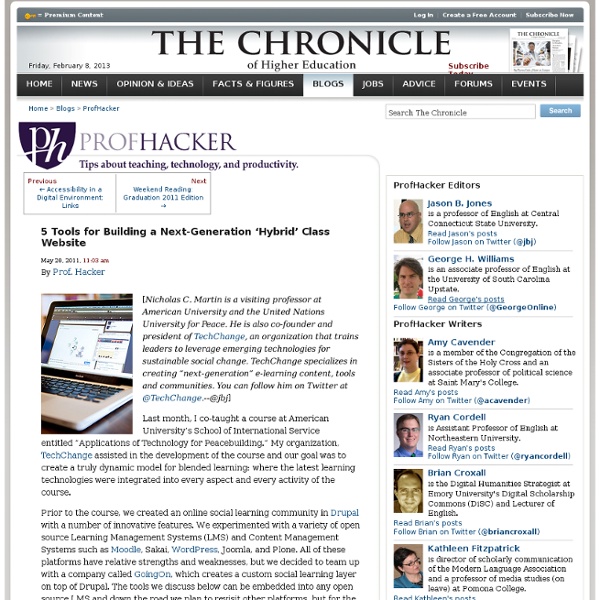5 Tools for Building a Next-Generation 'Hybrid' Class Website

A Framework for Teaching with Twitter
Faculty are increasingly experimenting with social media, and it’s exciting to find more and more courses incorporating Twitter, a ProfHacker favorite. Just last week on ProfHacker Ryan provided an excellent introduction to Twitter, while earlier in the summer Brian reflected on his use of Twitter in the classroom during Spring 2010. As we gear up for the Fall 2010 semester, I wanted to revisit the idea of teaching with Twitter. I’ll address my own pedagogical use of Twitter in a future ProfHacker post, but for today I want to share a general framework for Twitter adoption in the classroom, originally sketched out in late August 2009 by Rick Reo. In the process, I adapted Rick’s original matrix, re-imagining the vertical axis as a spectrum of conversation, ranging from monologic to dialogic, and redefining the horizontal axis as a measurement of student activity, ranging from passive to active. How about you?
The Social Compass is the GPS for the Adaptive Business Brian Solis
inShare286 Over the years, I’ve written extensively about the need to extend opportunities in social media beyond marketing and customer service to set the stage for the social business. I believe that the impact lies beyond the socialization of business; it introduces us to a genre of an adaptive business, an entity that can earn relevance now and over time by listening, engaging, and learning. In October 2009, I worked with JESS3 to visualize corporate transparency and authenticity for the release of Engage. In the process, I realized that those two words, transparent and authentic, didn’t carry tangible business value to leaders and decision makers. Please, before you think about engaging in social media, I need you to do two things…be transparent and authentic in all you do. Got it? While the words carry great importance, in all honesty, it’s our job to define the role of transparency and authenticity in business. Exploring The Social Compass Center: The Brand Halo 1: The Players - Poster
Related:
Related:



